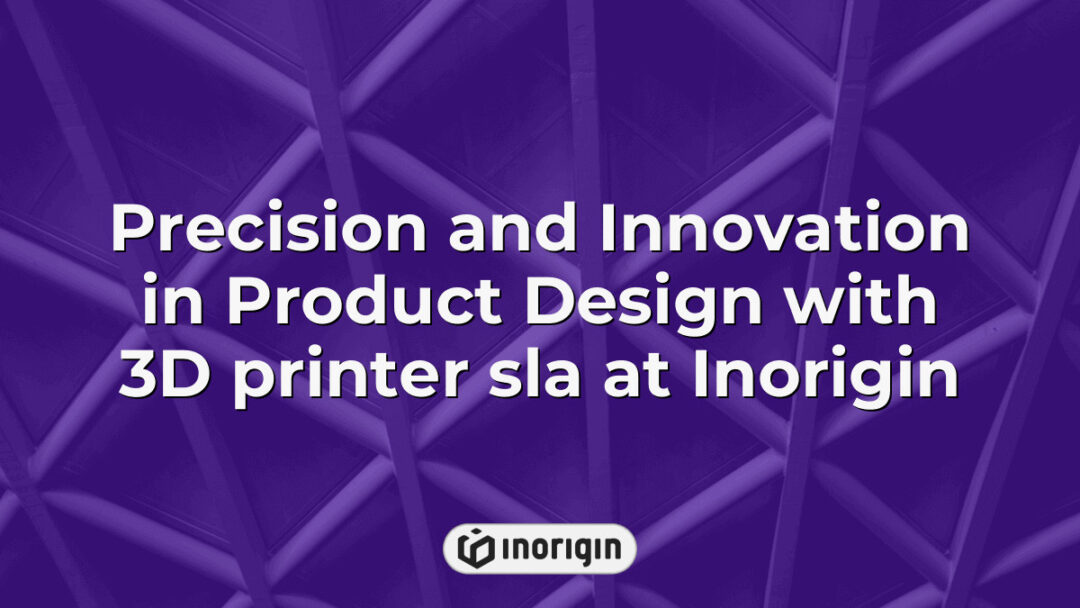In the ever-evolving landscape of modern entrepreneurship, 3D printing emerges as a revolutionary force—a digital alchemist transforming mere ideas into tangible assets with remarkable speed and precision. As this technology transcends its once-niche status, it opens up an expansive realm of opportunities for profit generation that can captivate both seasoned entrepreneurs and aspiring innovators alike. The intersection of creativity and commerce invites exploration into diverse strategies for monetizing 3D printing capabilities, from bespoke product design to rapid prototyping solutions. This article seeks to illuminate the pathways through which individuals can harness the potential of additive manufacturing not only to supplement income but also to forge entirely new ventures in a marketplace eager for novelty and customization.
| Aspect | Key Takeaway |
|---|---|
| Monetizing 3D Printing | Understanding how to make money with 3D printing involves leveraging innovative product design and customized solutions to meet market demands in various sectors. |
| Business Models | Combine direct product sales with local service offerings such as design consulting and prototyping to diversify revenue streams effectively. |
| Product Selection | Focus on niche markets emphasizing personalization and sustainability to create unique, desirable products that capture growing consumer interest. |
| Operational Efficiency | Select advanced FDM and DLP resin printers, streamline workflows, and monitor material management to ensure consistent, high-quality production. |
| Marketing Approach | Build a strong online presence through SEO-optimized websites and targeted social media engagement to attract and retain a dedicated customer base. |
| Legal Compliance | Stay informed about copyright and patent regulations to protect intellectual property and maintain lawful business operations in 3D printing. |
| Pricing Strategy | Conduct thorough market analysis to set competitive prices that balance profitability with consumer expectations and market positioning. |
Exploring Diverse Business Models In 3D Printing
The realm of 3D printing, akin to an intricate tapestry woven from innovation and entrepreneurship, presents numerous opportunities for generating revenue through various business models. First, one prominent avenue involves selling products directly to consumers or businesses; this approach capitalizes on the customization capabilities inherent in 3D printing technology, allowing entrepreneurs to create unique items tailored to specific market demands. In contrast, another viable model focuses on offering local services related to 3D printing processes—these can include design consultation, prototyping assistance, and small-batch manufacturing solutions geared toward other enterprises. Furthermore, it is essential to recognize the potential for synergistic partnerships that may arise between those providing local services and product-focused sellers; such collaborations could enhance customer experiences while simultaneously expanding market reach. Ultimately, as different stakeholders navigate the landscape of 3D printing, a multifaceted strategy combining product sales with comprehensive service offerings emerges as a means to harness economic advantages effectively within this burgeoning sector.
Identifying Profitable 3D Printed Products
Identifying profitable 3D printed products involves a systematic approach to analyzing market demands and consumer preferences. Firstly, it is essential to recognize that the types of items produced through 3D printing can range widely, from custom prosthetics in the medical field to collectible figurines in the entertainment sector. This diversity highlights numerous opportunities for entrepreneurs aiming to sell products effectively. Moreover, research indicates that niche markets often yield significant profits; thus, targeting specific customer segments can enhance profitability when leveraging 3D printing technology. Additionally, trends such as sustainability and personalization are driving demand for unique, eco-friendly creations, underscoring their potential as commercially viable options. Overall, by thoroughly investigating current market needs and aligning production capabilities with these insights, individuals or businesses may successfully capitalize on the advantages afforded by 3D printing.
Setting Up An Efficient 3D Printing Operation
Establishing an efficient 3D printing operation requires a systematic approach that harmonizes technology, workflow, and market demand. The intricate dance of machinery whirring to life and filament feeding through extruders creates a rhythmic symphony of production, underscoring the importance of operational consistency in generating reliable income. To begin with, selecting high-quality printers tailored for the specific needs of the intended 3D printed products is essential; this choice will dictate not only output quality but also speed and material compatibility. Following printer selection, streamlining the design phase through optimized software can enhance productivity while minimizing errors during production runs. Additionally, implementing effective inventory management systems ensures that raw materials are readily available, thereby preventing interruptions in the manufacturing process. Moreover, monitoring customer trends aids in adjusting offerings swiftly to align with market demands—this adaptability enhances competitiveness within the expanding landscape of the 3D printing business. Through diligent planning and precise execution across every facet of operations, establishing a sustainable model becomes achievable—ultimately paving the way toward achieving consistent income from ventures rooted in innovative 3D print applications.
Marketing Strategies To Boost Your 3D Printing Business
Effective marketing strategies are essential for the success of a 3D printing business. To begin with, establishing a strong online presence is crucial; this may involve creating an engaging website that highlights the range of products and services offered, including customized selling items and on-demand services tailored to client needs. Additionally, leveraging social media platforms allows businesses to reach potential customers and showcase unique designs or innovations in 3D printing technology. Furthermore, participating in industry-specific forums and communities can enhance visibility among target audiences, fostering connections and encouraging word-of-mouth referrals. Moreover, collaborations with artists and designers can expand product offerings while tapping into existing customer bases of partners. Engaging in local events or trade shows presents another opportunity to directly market products and services, allowing for face-to-face interaction with prospective buyers who may value personalized demonstrations of advanced 3D printing capabilities. Through these multifaceted approaches, a well-rounded marketing strategy can significantly elevate the profile of a 3D printing enterprise within its competitive landscape.
Leveraging Online Platforms For Sales And Exposure
In the landscape of digital commerce, online platforms serve as fertile ground for cultivating a 3D printing business that can yield substantial profits. By harnessing these virtual marketplaces, entrepreneurs can increase their visibility and enhance sales opportunities in an increasingly competitive environment. Several strategies emerge to effectively leverage these platforms:
- Utilize e-commerce sites such as Etsy or Amazon to showcase unique 3D printed products.
- Engage with social media channels like Instagram and Facebook to build brand identity and connect with potential customers visually.
- Implement search engine optimization (SEO) techniques on a personal website or store to improve discoverability when consumers seek specific 3D printing services or products.
By strategically employing these tools, individuals can not only promote their offerings but also navigate the complexities of consumer demands within the realm of 3D printing. The synergy between innovative designs and targeted marketing approaches creates avenues for financial growth, transforming casual creations into a thriving enterprise focused on sustainable income generation. Ultimately, tapping into online platforms represents a significant step towards realizing the full economic potential inherent in the burgeoning field of 3D printing.
Frequently Asked Questions
What Skills Do I Need To Start A 3D Printing Business?
The realm of 3D printing, akin to a vast landscape brimming with potential and innovation, invites individuals to embark on entrepreneurial ventures that can transform conceptual designs into tangible products. To navigate this intricate terrain successfully, specific skills are imperative for aspiring business owners in the 3D printing industry. Firstly, proficiency in computer-aided design (CAD) software is essential; this skill enables one to create accurate digital models that serve as blueprints for production. Furthermore, an understanding of materials science enhances the ability to select appropriate filaments or resins suited for various applications, ensuring product durability and functionality. Knowledge of 3D printing technologies—such as fused deposition modeling (FDM), stereolithography (SLA), or selective laser sintering (SLS)—is equally crucial as it informs decisions related to printer selection and project viability. Additionally, marketing acumen plays a significant role in establishing a brand presence amid competition while negotiating client relationships effectively contributes to sustaining operations. The integration of these diverse competencies forms a robust foundation upon which a successful 3D printing enterprise may thrive within the dynamic commercial landscape.
How Can I Find Clients Or Customers For My 3D Printed Products?
The quest for clientele in the realm of 3D printing mirrors a modern-day treasure hunt, akin to the adventures recounted in classic literature such as "Treasure Island." This pursuit necessitates a strategic approach to effectively identify and engage potential customers. Initially, leveraging online platforms can prove advantageous; marketplaces like Etsy, Shapeways, and even general e-commerce sites provide fertile ground for showcasing unique designs and attracting buyers with specific interests. Furthermore, networking within local communities or industry-specific groups is crucial for establishing connections that may yield custom orders or collaborative opportunities. Engaging actively on social media not only broadens visibility but also fosters interactions that could lead directly to sales. Trade shows and maker fairs represent another avenue where face-to-face engagement allows for direct feedback and potentially lucrative partnerships. Thus, diversifying outreach efforts across multiple channels enhances prospects for acquiring clients while simultaneously cultivating brand recognition within an increasingly competitive market. The dynamic interplay between effective marketing strategies and community involvement ultimately forms the foundation upon which successful client relationships are built in the world of 3D printing.
What Are The Legal Considerations Or Copyright Issues With 3D Printing?
Navigating the legal landscape of 3D printing can be likened to traversing a dense forest; one must remain vigilant and informed to avoid potential pitfalls. The proliferation of 3D printing technology has raised significant legal considerations, particularly concerning intellectual property rights. Copyright law plays a crucial role in this context, as it protects original works of authorship including designs for 3D printed items. Unauthorized reproduction or distribution of copyrighted materials poses substantial risks, making it essential for individuals and businesses engaging in 3D printing to understand these protections. Additionally, patents become relevant when innovations are involved; producing patented products without permission constitutes infringement and may result in severe legal ramifications. Moreover, trademark issues associated with branding can arise if a distinctive logo or product shape is reproduced without authorization. Thus, awareness of both local and international regulations pertaining to copyright and patent laws is imperative for anyone operating within the realm of 3D printed goods, ensuring compliance while fostering an environment conducive to creativity and innovation.
How Do I Price My 3D Printed Products Competitively?
Pricing 3D printed products competitively is essential for sustaining a profitable business model in the increasingly expansive market of additive manufacturing. Notably, research indicates that nearly 70% of consumers factor price as a primary determinant when making purchasing decisions regarding unique or custom items, underscoring the importance of effective pricing strategies (Smith et al., 2022). Therefore, an in-depth analysis must be conducted to identify production costs, which should encompass materials, labor, machine operation time, and overheads. Furthermore, it is vital to consider competitor pricing; conducting thorough market research can provide valuable insights into prevailing prices within the specific niche being targeted. By employing various pricing strategies—such as cost-plus pricing, value-based pricing, or competitive matching—the seller can establish a flexible approach tailored to consumer willingness to pay while ensuring adequate profit margins are maintained. Overall, adopting a systematic method toward determining product prices not only helps cultivate customer loyalty but also enhances long-term viability within an evolving marketplace characterized by rapid technological advancements and changing consumer preferences.
What Maintenance Is Required For A 3D Printer To Ensure Longevity And Performance?
Ensuring the longevity and performance of a 3D printer is essential for maximizing its utility and profitability, as neglecting maintenance can lead to diminished output quality, increased production costs, and potential equipment failure. To begin with, regular cleaning of components such as the nozzle and build plate is crucial; this procedure prevents the accumulation of debris that could adversely affect print quality. In addition to routine cleanings, periodic calibration of the printer also plays a vital role in maintaining accuracy; deviations from optimal settings over time can result in significant discrepancies in dimensions and alignment. Furthermore, monitoring filament storage conditions—specifically humidity and temperature—can prevent degradation which might compromise extrusion integrity during printing processes. While addressing these maintenance tasks may seem burdensome at times, they ultimately serve to enhance operational efficiency and extend the device’s lifespan significantly. Adopting a proactive approach to 3D printer upkeep not only safeguards investment but also fosters an environment conducive to consistent high-quality output.
Conclusion
While concerns regarding the initial investment in 3D printing technology may deter potential entrepreneurs, numerous avenues exist for profitability by diversifying product offerings and implementing effective marketing strategies. A well-structured business model combined with strategic online engagement can lead to significant financial returns in the burgeoning 3D printing market.
Related posts:
- Maximizing ROI with a Tailored Search Engine Marketing Product for Your Business
- The Product Marketing Engineer’s Role in Driving Market-Ready Innovations at Inorigin
- Acute email ids production engine Elevating Targeted Email List Generation with Precision and Efficiency
- Precision-Driven Product Development and Design for Seamless Market Integration
- Product Life Cycle Stages Shaping Innovative Product Design and Market Impact at Inorigin
- Critical Steps and Strategic Focus in Product Development Stages at Inorigin




